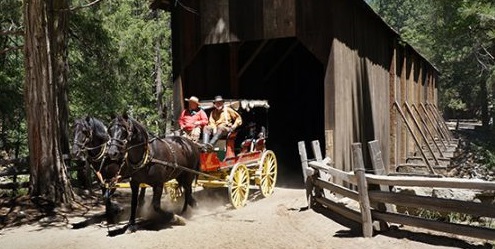Another way Joshua could have taken his family from North Carolina is over land. However, this was not as simple as loading up the family wagon and taking off to Mississippi.
Even when we visit Wilderness Areas in America today, if we should happen to take off through the woods we do not experience the difficulties our ancestors did. When camping, I often will take a walk through the woods. I will come upon fallen trees that I must climb over, bushes that I go around, and vines and briars that block my way, and the occasional opossum that I have disturbed. These obstacles are nothing compared to what our early ancestors experienced when they tried to conquer this virgin land.
In 1694 Governor Fletcher of New York commanded William Pinhorne to scout out a French Canadian outpost in preparation for an attack. In response, he told of a route where “men cannot go upright, but must creep through bushes for whole day’s marches and it was impossible for horses to go any time of the year”.1 Gloria Wadzinski, “Horse Drawn Wagon Emerging from Covered Bridge”, Pioneer Yosemite History Center, Wawona, California.[/caption]
Gloria Wadzinski, “Horse Drawn Wagon Emerging from Covered Bridge”, Pioneer Yosemite History Center, Wawona, California.[/caption]
istory of Travel in America ( Indianapolis: The Bobbs-Merrill Company, 1915), 14-15.] In later pages Mr. Seymour describes the early North American continent as a “most howling wilderness” which was immense and unconquerable.2 It’s no wonder that colonists stayed within 150 miles of the Atlantic coast until after the Revolutionary War.
After the Revolution was over, Americans started to make their way west. When President Jefferson made the Louisiana Purchase, the United States controlled both sides of the Mississippi River, making it even more important as Americans sought to travel down the Mississippi to New Orleans. In the early 1800s, the US became concerned that it took 2 months to get a letter to New Orleans, and President Jefferson signed a law creating a Federal Horse Path.3 This new road would connect the southern end of the Fall Line Road with New Orleans. As things were heating up prior to the War of 1812, the US became concerned about an attack by Great
Britain from the South, and the Federal Horse Path was widened into a road that could carry military supplies.4
Along this road, the US Government had contracted with the Native American Nations to build bridges, provide ferries, and operate inns and lodging along the way. Often though, the bridges would be washed out and the ferries not existent.
In 1810, as Joshua was contemplating moving his young family to Mississippi, the Federal Horse Path was beginning to be transformed into a road. This sounds like a risky proposition for moving a family and all of their possessions. Would the entire road be open? When would construction be finished? What do I do if a bridge is washed out? Is there a better way to travel? We will see next time!
- Seymour Dunbar, A H
[caption id=”attachment_457″ align=”alignright” width=”495″ ↵
- Seymour Dunbar, A History of Travel in America ( Indianapolis: The Bobbs-Merrill Company, 1915),15. ↵
- William Dollarhide, Map Guide to American Migration Routes, 1735-1815 (Bountiful, Utah: HeritageQuest, 2000), 33. ↵
- William Dollarhide, Map Guide to American Migration Routes, 1735-1815 (Bountiful, Utah: HeritageQuest, 2000),35. ↵